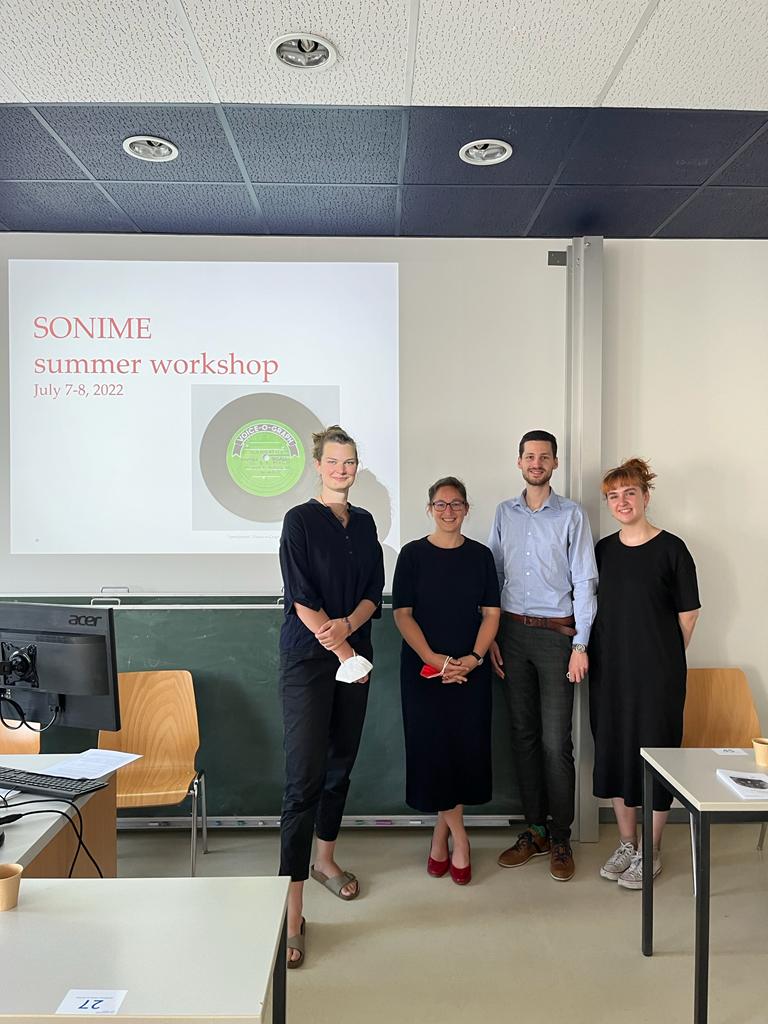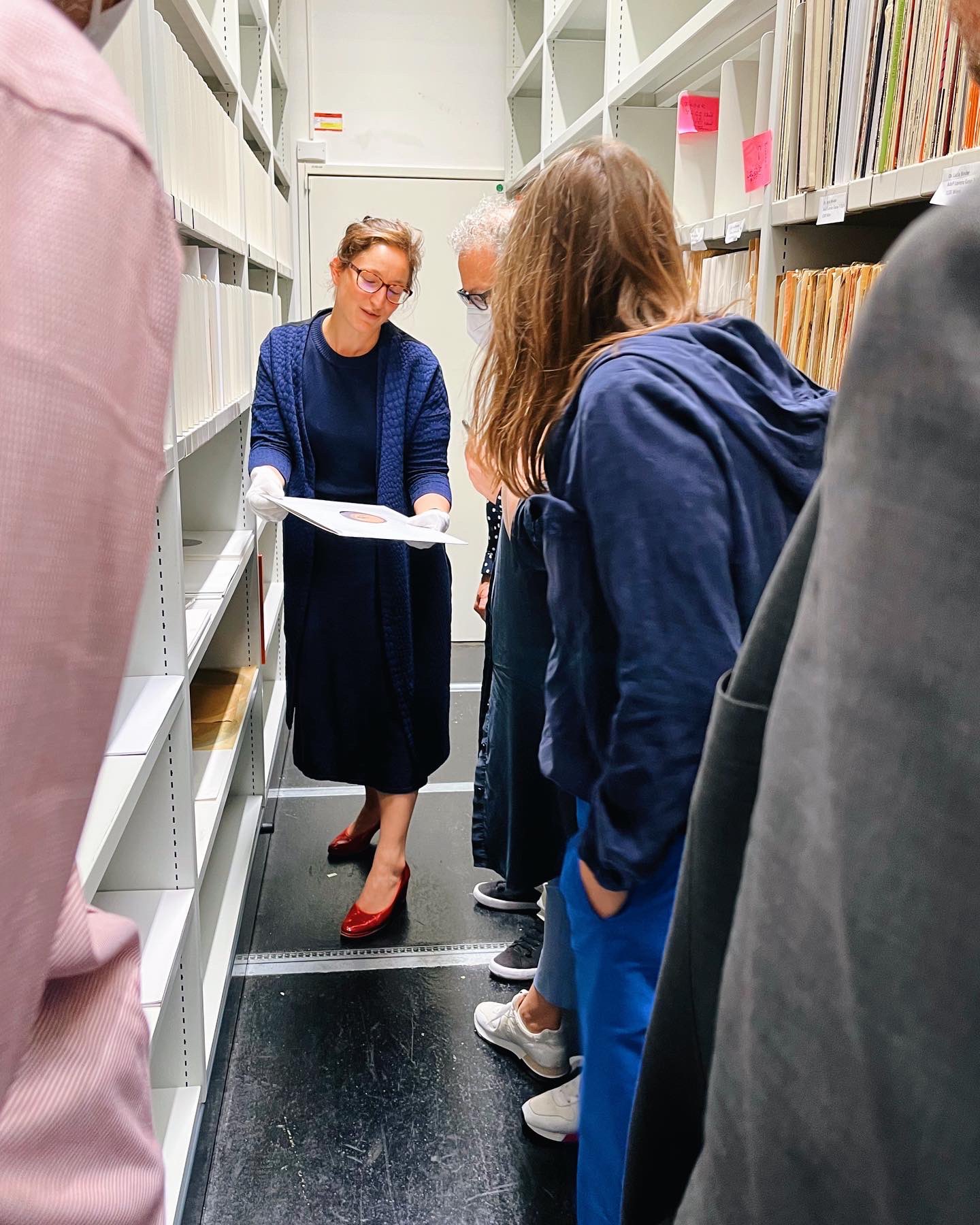SONIME summer workshop
SONIME summer workshop with the Scientific Advisory Board (2022)
Phonogrammarchiv, Österreichische Mediathek and Alte Burse/ÖAW, Vienna
July 7-8, 2022
Organised by Eva Hallama, Katrin Abromeit and Johann Hinterstoisser
Invited guests
Prof. Nadia Al-Bagdadi – Central European University
Prof. Thomas Y. Levin – Princeton University
Stephan Puille – HTW Berlin
Dr. Federica Bressan – Stony Brook University
JProf. Dr. Gerhild Perl – University of Trier
Prof. Dirk Rupnow – University of Innsbruck
As an introduction to the workshop, Eva Hallama, Katrin Abromeit and Johann Hinterstoisser gave insights into their ongoing project SONIME. A brief history of the voice letter using the example of audio letters from the Phonogrammarchiv and the Österreichische Mediathek was followed by discussions of the project’s research questions: Can audio letters be conceived as “memory objects” in the context of migration, separateness and geographical distance? How does speaking and listening to letters – and the preserved voice – create closeness and sustain relationships? As Eva Hallama pointed out, the notion of memory objects highlights the materiality of letters and the process of substituting what is missing. Following on from this, she presented a psychoanalytic perspective on the voice as the earliest “sound object” that gives the fetus experiences of absence and loss and a sense of the “other” (Maiello). Thus, the practice of speaking and listening to letters would be one that assures itself of the existence of the Other, as the voice is the only witness that the Other actually exists and is not just an illusion (Lacan).
Katrin Abromeit introduced the second set of questions surrounding the concept of “material culture.” How has the available technology shaped and influenced the practice of audio letters, and what do material compositions tell us about the historical significance and use of audio letters as acoustic cultural heritage? Katrin Abromeit used the example of grooves magnified by the microscope to illustrate, among other things, how much the cut image of sound recordings on record could differ from one another and what this tells us about the producers. And she illustrated the complexity of the restoration work by showing different patterns of degradation in direct-cut records. Johann Hinterstoisser presented the FT-IR procedure to be carried out for material analysis, with which the material of the sound carriers can be identified. This is a prerequisite for developing cleaning and restoration procedures as well as determining the best conditions for long-term archiving.
The centerpiece of the workshop was then several close listening sessions. Here, early audio letters in different languages from 1907 to 1971 that have survived in both archives from wax cylinders and direct-cut records, audio tapes and compact cassettes were listened to together. Collective listening and making associations about what was heard enabled multi-perspective observations that made, for example, media-historical, cultural or technical facets of the recordings visible and audible. Non-content aspects of voice, such as speaking modes, pauses, and also the design of the recording with music, singing, etc. were addressed. The character of migration in comparison to other forms of mobility became relevant, as did the challenge of collecting media from decentralized, marginalized groups.
Inspired and equipped with numerous hints, the project SONIME would like to thank their colleagues from both host institutions for their cooperation, especially Christian Liebl and Johannes Kapeller, the student assistants Mariken Egger and Johann Hinterstoisser, as well as the members of our esteemed advisory board Nadia al-Bagdadi, Federica Bressan, Gerhild Perl, Thomas Levin, Dirk Rupnow, and Stephan Puille for their constructive contributions!
For further information on the workshop and the whole report follow these links:
SONIME summer workshop – Programme
SONIME summer workshop – Report



